
72 Hands
2022 Update
Preserving the old https://72hands.org/ website here is bittersweet. I’ve copied over the text, videos and images. But I still have a number of unedited videos on an old hard drive, and unrealized dreams as well.
2018 Update
Unfortunately I don’t have the resources to continue the 72 Hands project. I have applied for grants and appealed for donations without success. When I have time I will try to upload the 30+ videos of ceramics techniques that I have already filmed. In the meantime, I hope you will visit https://glazy.org, an open-source ceramics recipes library which I am still maintaining.
From the Tiangong Kaiwu (天工開物) encyclopedia compiled by Song Yingxing (宋应星) at the end of the Ming Dynasty comes the oft-cited quote:
“共计一杯工力,过手七十二,方可成器”
For the total work required to make a single cup, it must pass through 72 hands, and only then can it become a vessel.
72 Hands is an effort to document all types of ceramics techniques. The video style is very simple- a single take of each technique focusing on the artisan’s hands. Each video is accompanied by an article with a description of the technique and photos. Videos are shot in high-resolution 4K Ultra-HD resolution which gives a clear view of the technique.
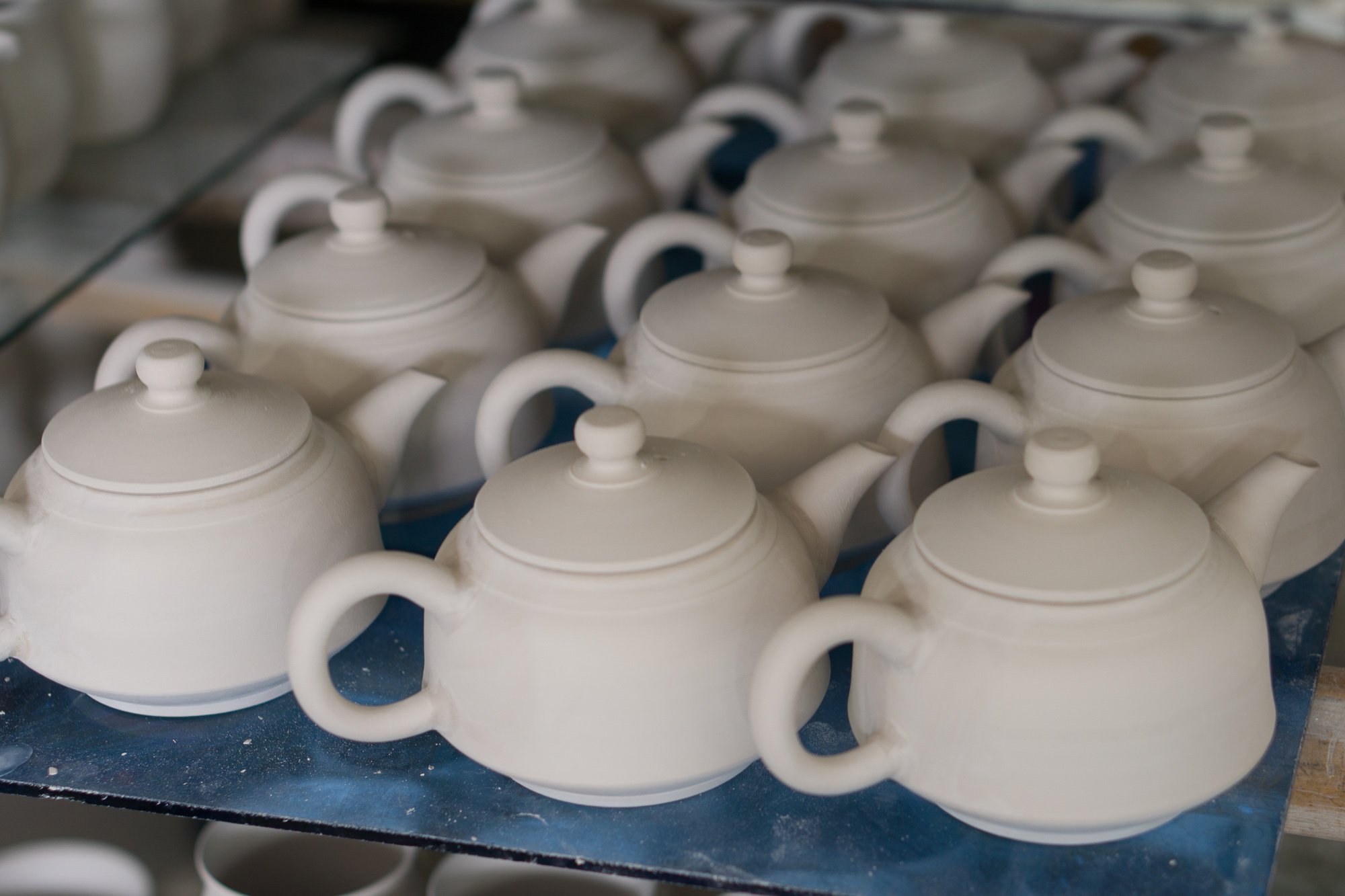
Dry-joining Teapots
Dry-joining porcelain is a process unique to Jingdezhen. While many potters in the west join spouts and handles during the leather-hard stage, dry-joining has less problems with cracking & warping and does not require long periods of supervised drying. Simple slip & water is used for the initial stage, while a special mix of porcelain is used to fill in and cover up the seams.
The slip-cast teapot bodies with lids ready for joining. Holes to strain tea leaves have already been punched-out using a tubular metal tool.
Slip-cast handles & spouts ready to be joined. Notice the handles are hollow, therefore weigh less, which helps to reduce warping of the teapot at high-fire temperatures.
The finished teapots, drying and soon ready for decoration and glazing.
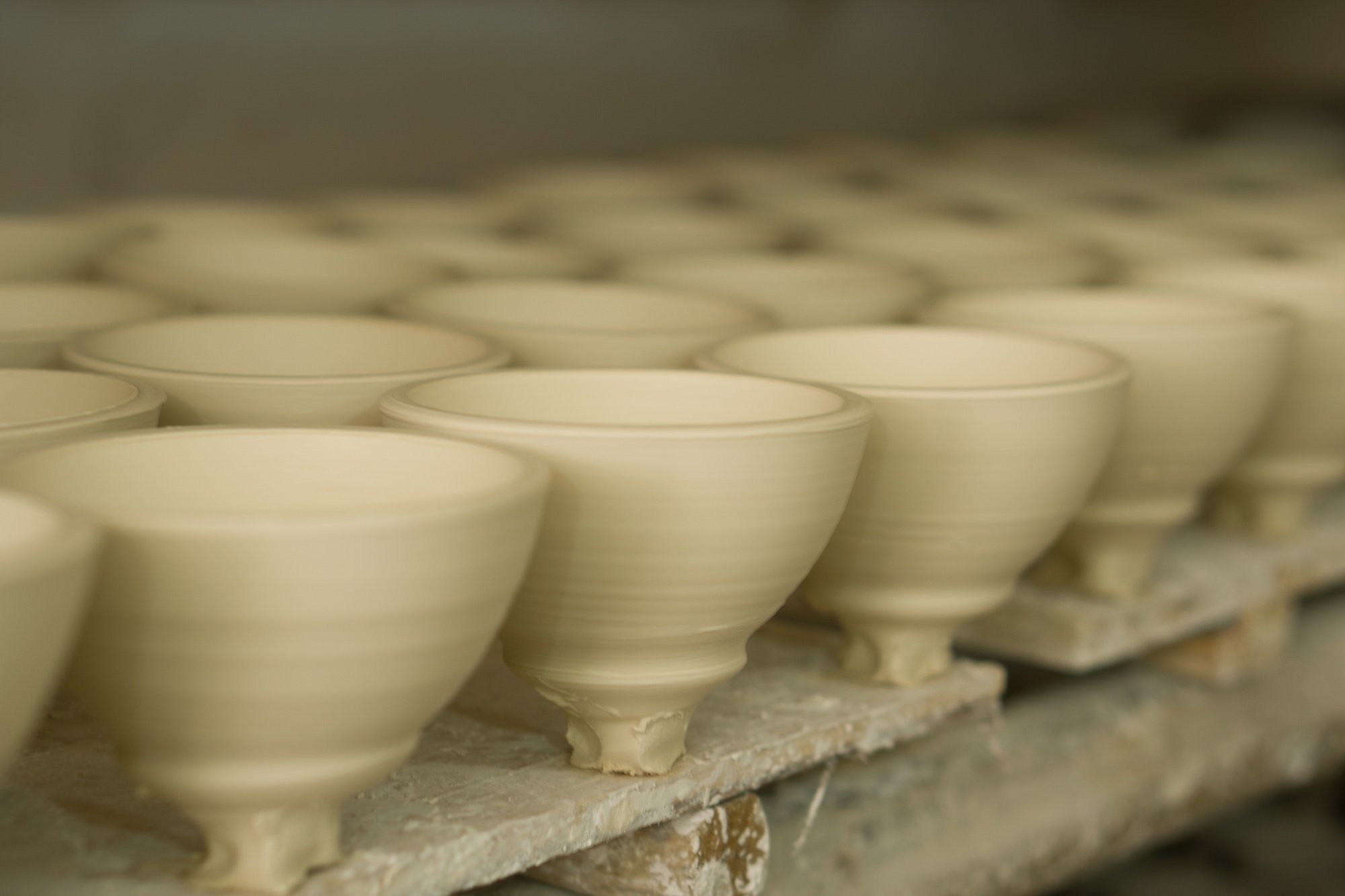
Throwing Teacups, Li Jia Cheng 李佳城
In Jingdezhen, the craft of throwing is one of speed and consistency.
Pieces are thrown fairly thickly, allowing for faster drying, less warpage, and more leeway for the trimmer to ensure that each piece is consistent in size and shape.
Throwers earn good wages and are in fairly high demand, although with the economic boom in recent years it has become difficult to find young apprentices willing to do such hard work.

Throwing Cups, Takeshi Yasuda
Takeshi Yasuda is a Japanese potter who was born in Tokyo, Japan in 1943. Yasuda trained at the Daisei-Gama Pottery in Mashiko from 1963 to 1966 and established his first studio there.[1] His early work consisted of ash-glazed stoneware, after which he explored sancai and creamware. Most recently Yasuda has been working with celadon-glazed porcelain.
Yasuda settled in Britain in 1973. He has taught at various art schools and universities across the United Kingdom and was Professor of Applied Arts at the University of Ulster.[2] From 2005 until 2010, Yasuda served as Director of the Pottery Workshop in Jingdezhen, China, and then established his own studio in the Jingdezhen Sculpture Factory.
In September 2014 he was awarded an Honorary Degree from Bath Spa University.[3]
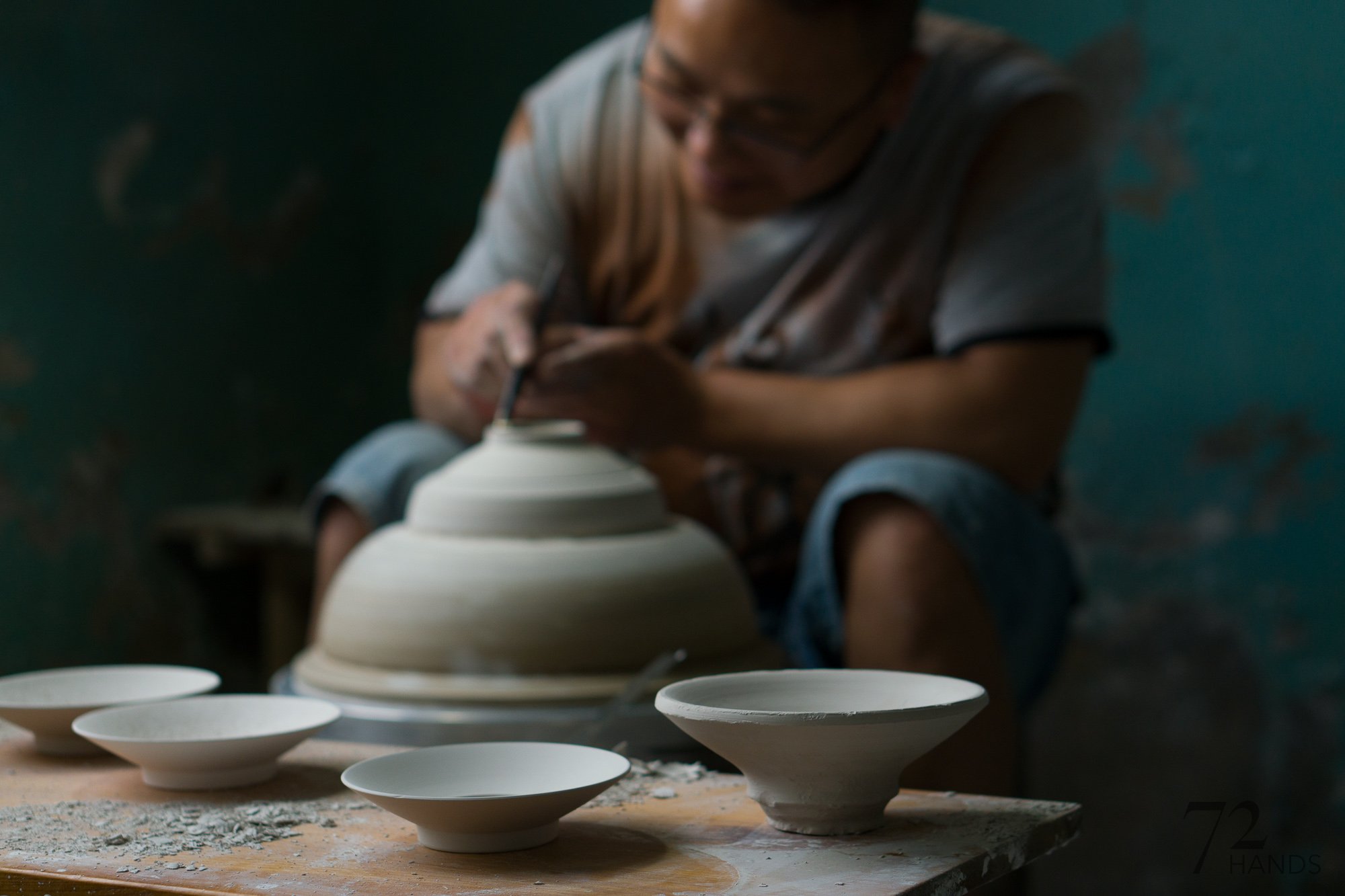
Trimming a Small Dish
While throwing is a fast and fairly imprecise art, trimming is slower and defines the final form of the ware. Here we see a craftsperson trimming high-end porcelain dishes, spending more time than usual on each piece to ensure the perfect shape, lightness, and consistency.

Trimming Teacups, Yu Hua 于华
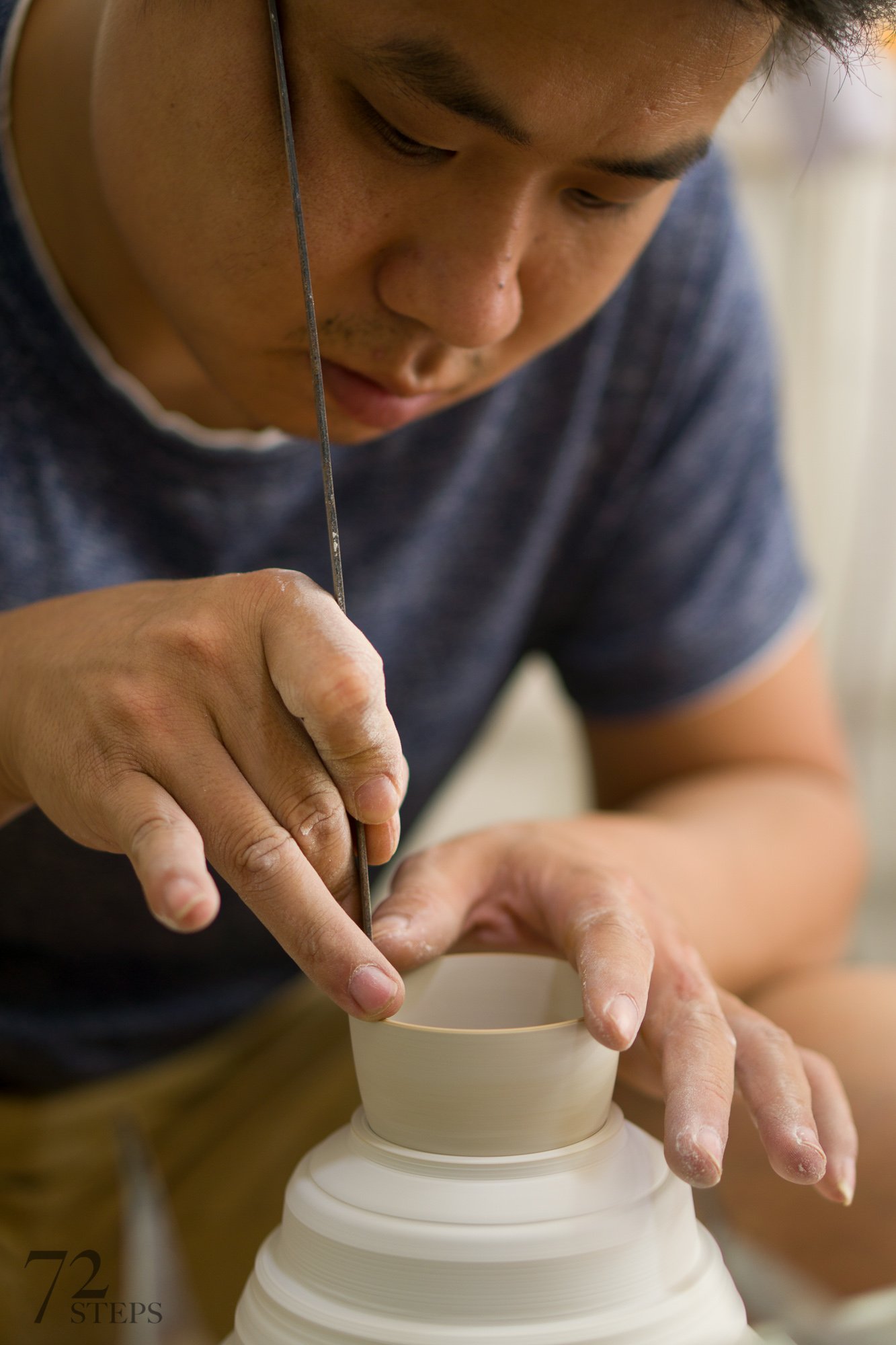

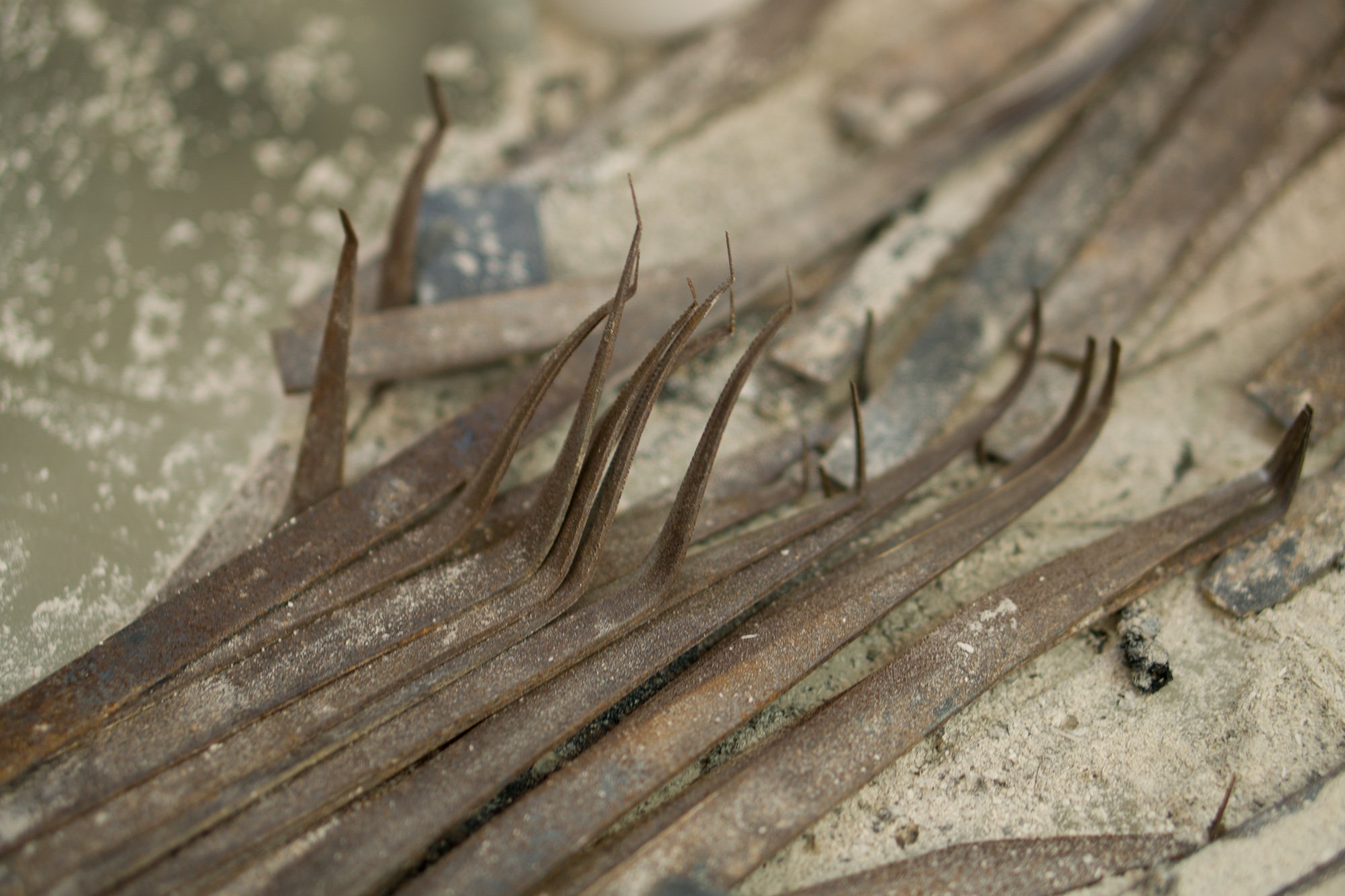

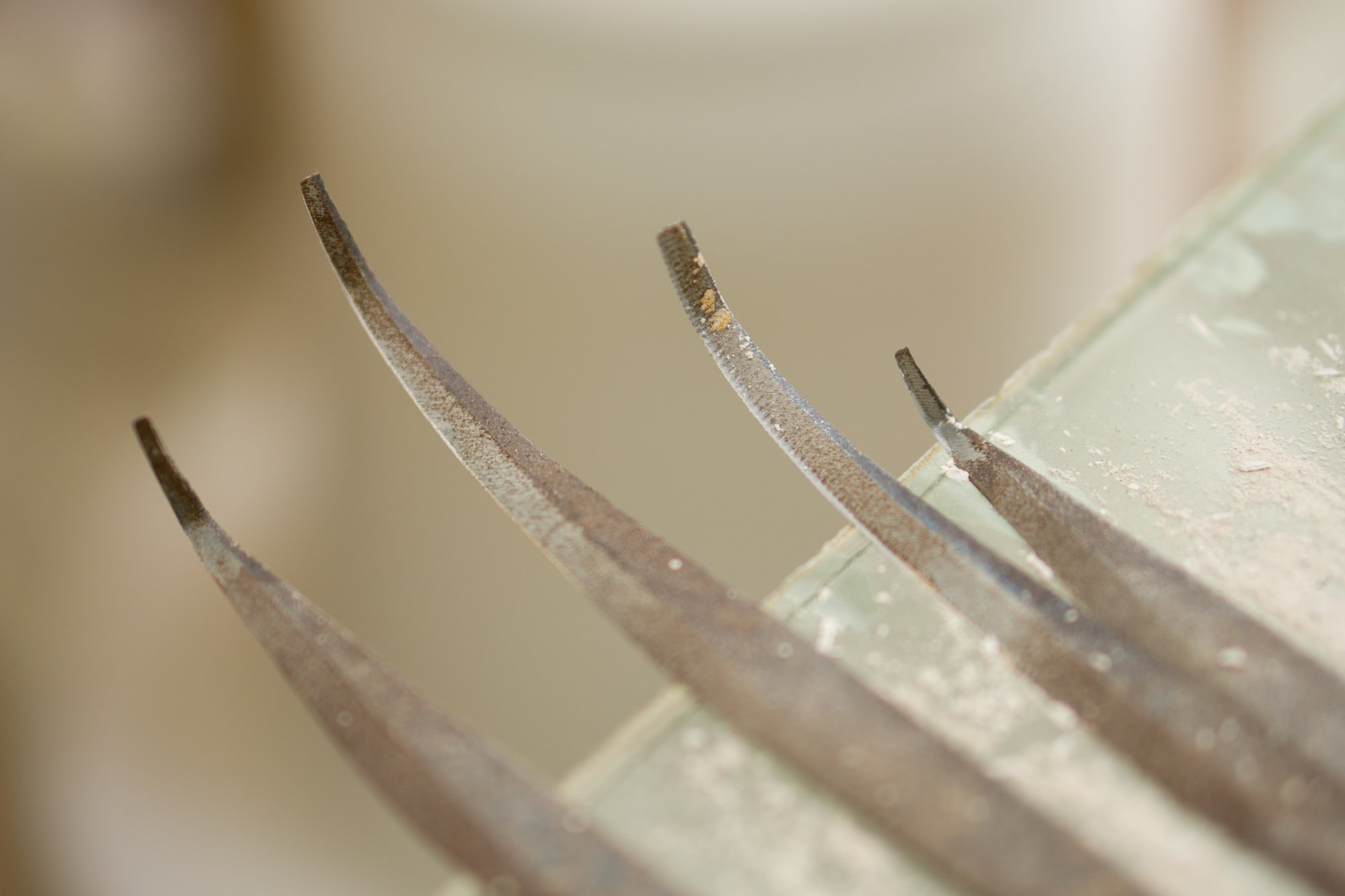

Folk Blue & White, Xu Lin Feng 徐林峰
After graduating from the prestigious Hangzhou Academy of Fine Arts, Xu Linfeng travelled to Jingdezhen in order to immerse himself in traditional porcelain manufacturing. In 2004, Xu Linfeng joined The Pottery Workshop in Jingdezhen, helping them build their artists’ studio and assisting foreign artists. During this time, Xu broadened his knowledge of Chinese porcelain techniques while also befriending a number of Western artists.
In 2010, Xu Linfeng moved to Shanghai in order to start a ceramics production studio for a well-known furniture maker, Chunzai. For the next few years, Xu honed his skills in both ceramics and management.
After starting a family, Xu returned to Jingdezhen in order to build an independent studio. He is now making blue & white ware inspired by Chinese folk kilns.
Xu's Tip: Leaves for Rims
Chamois leather is commonly used to smooth the rims of freshly thrown forms, but a variety of other materials like newspaper & plastic bags can be used as well. Xu recommends leaves, ideally bamboo, but leaves from common grasses work just as well.
The blue & white underglaze after mixing with a commonly-used type of brush.
A couple of Xu's small Blue & White bowls after firing.
Ming dynasty folk kiln blue & white bowls, the inspiration for Xu's current work.

Blue & White Underglaze Transfers
Underglaze tissue transfers come in a range of colors, most commonly blue, red, black and green. The character 壽 means longevity and is a commonly used motif in Chinese ceramics.
Tissue transfer drying on greenware. After a few minutes, the tissue can simply be removed, leaving the underglaze in place.
The final underglaze decoration after removal of the tissue. 囍 means double-happiness and is often used as a decoration in weddings.
Transfers that wrap around forms take the form of arcs. Here, a waste pile with discarded transfers.
Racks of completed transfer ware.
Underglaze transfers wrapping around forms.
Racks of completed transfer ware.
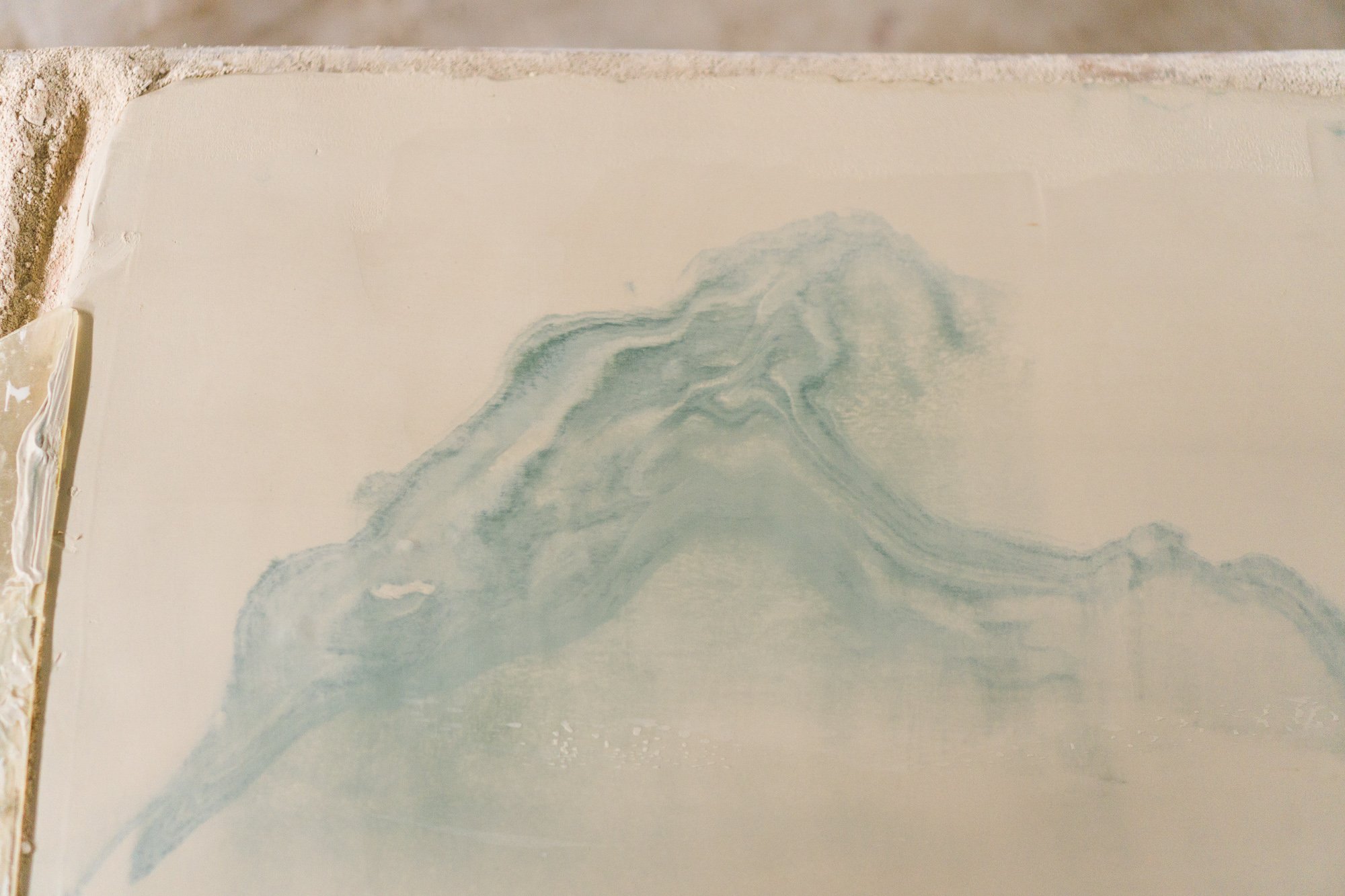
Rolling Tiles with Mixed-Clay (绞胎泥), Zhang Chun Gen 章春根
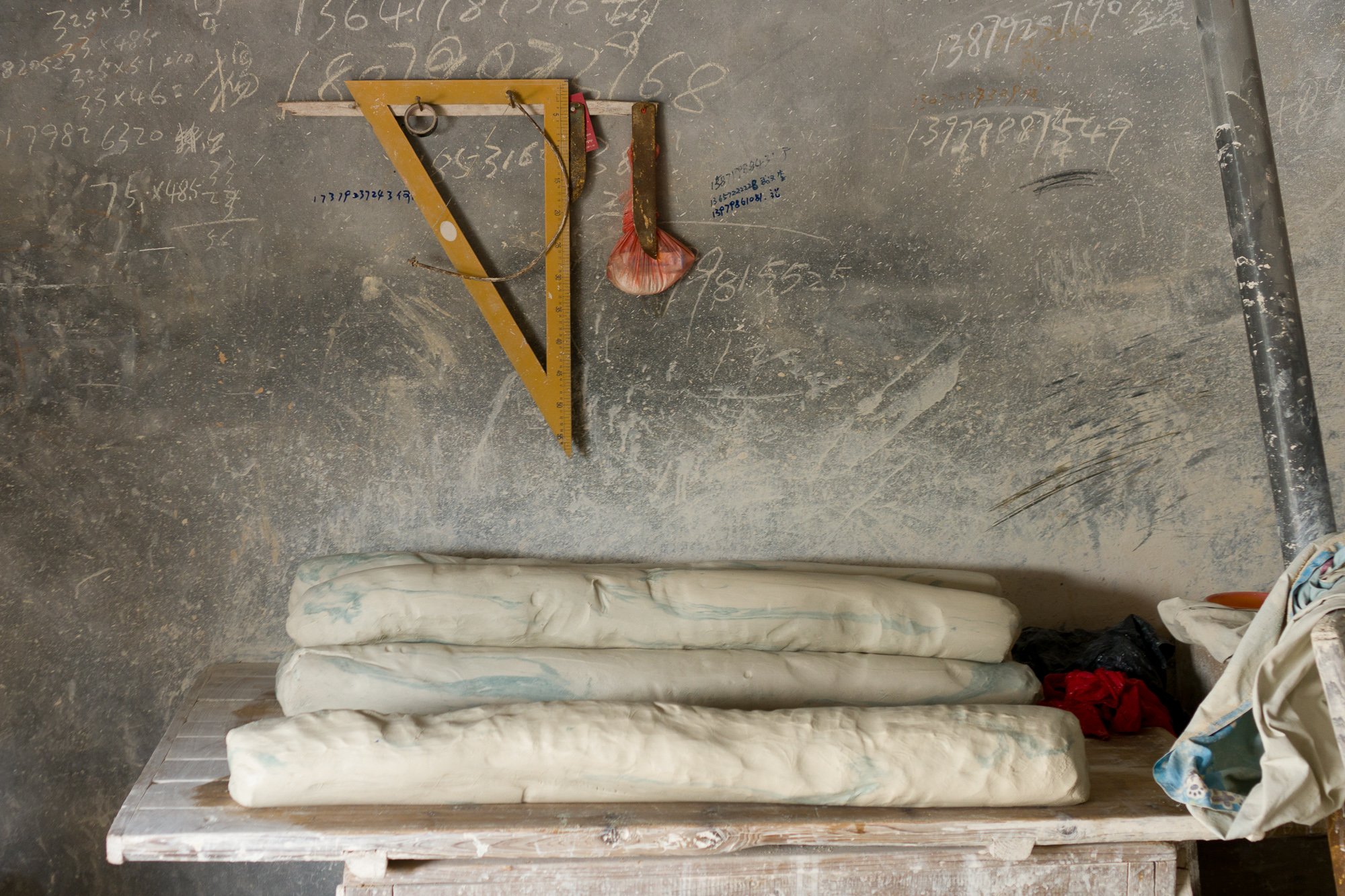
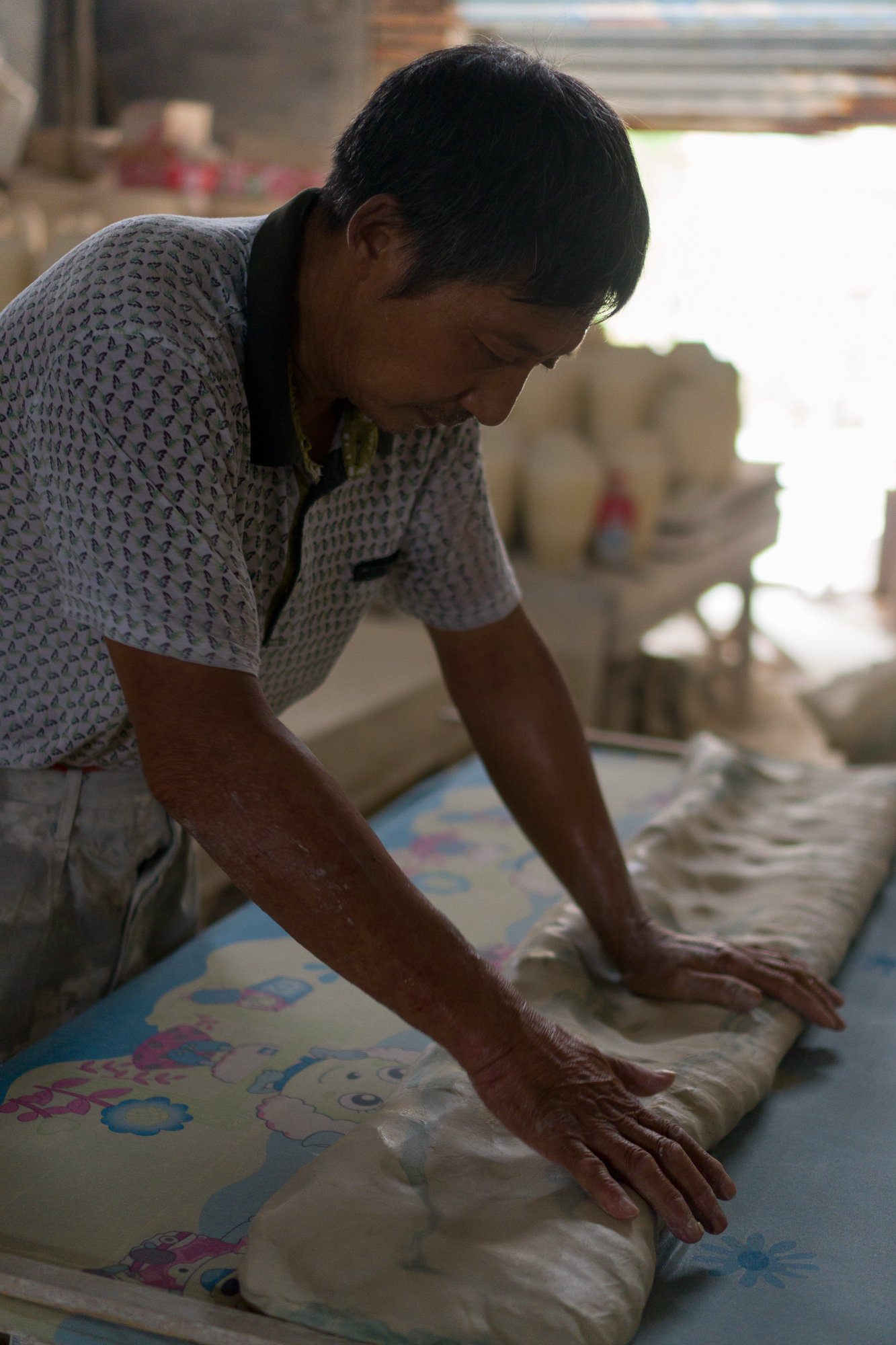
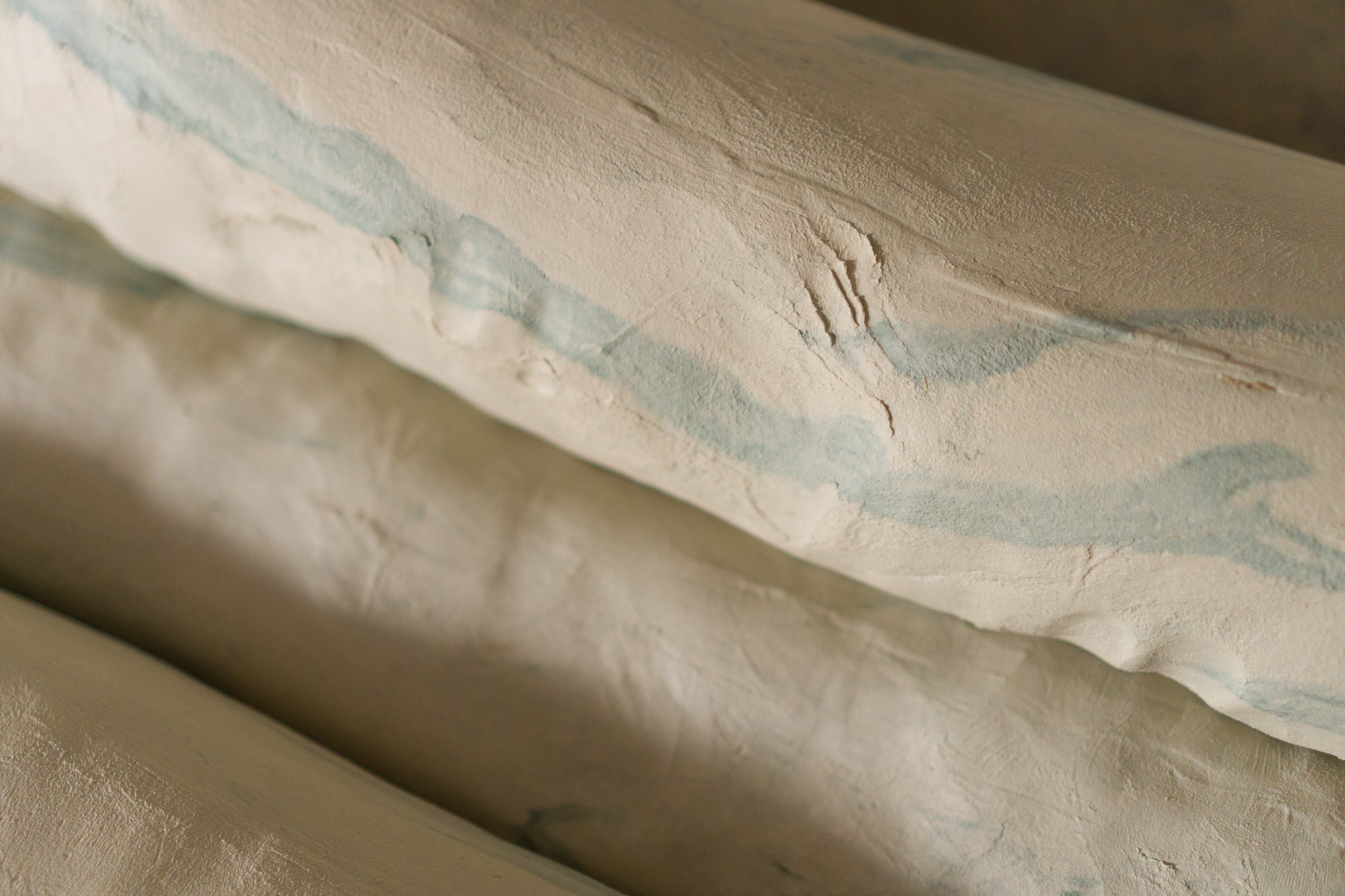
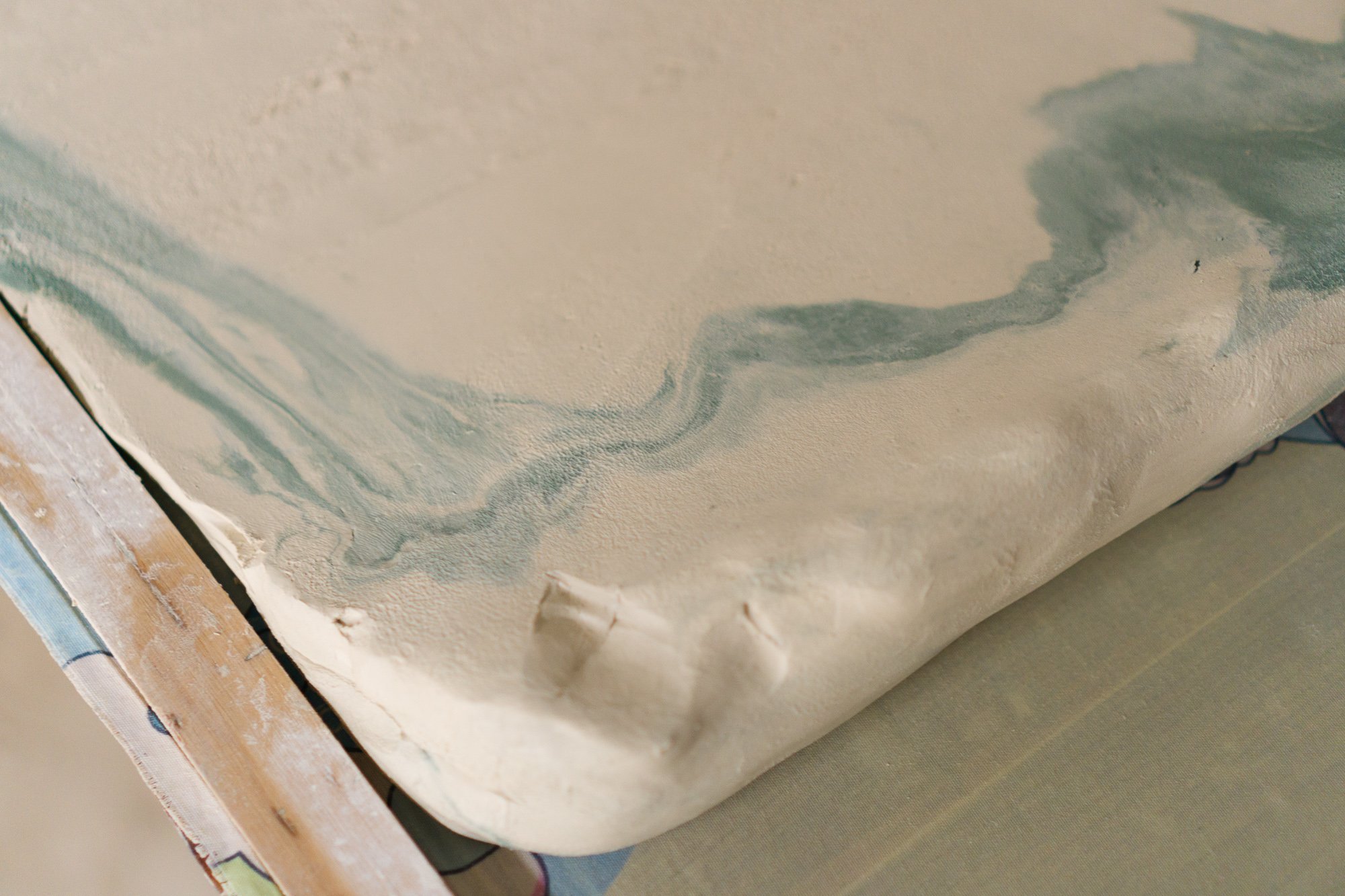

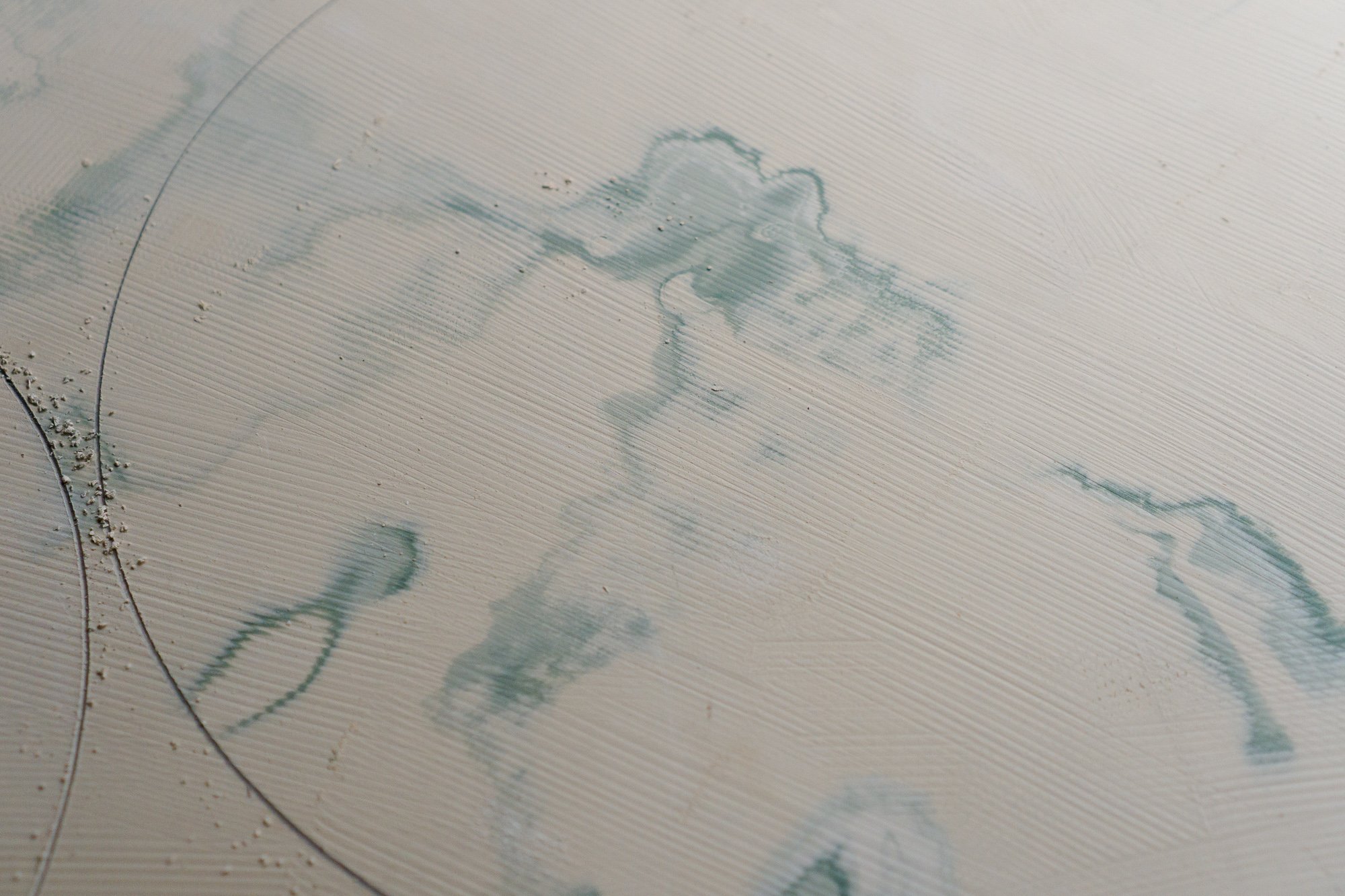

Trimming & Joining Vases, Wu Quan Fa 吴泉发
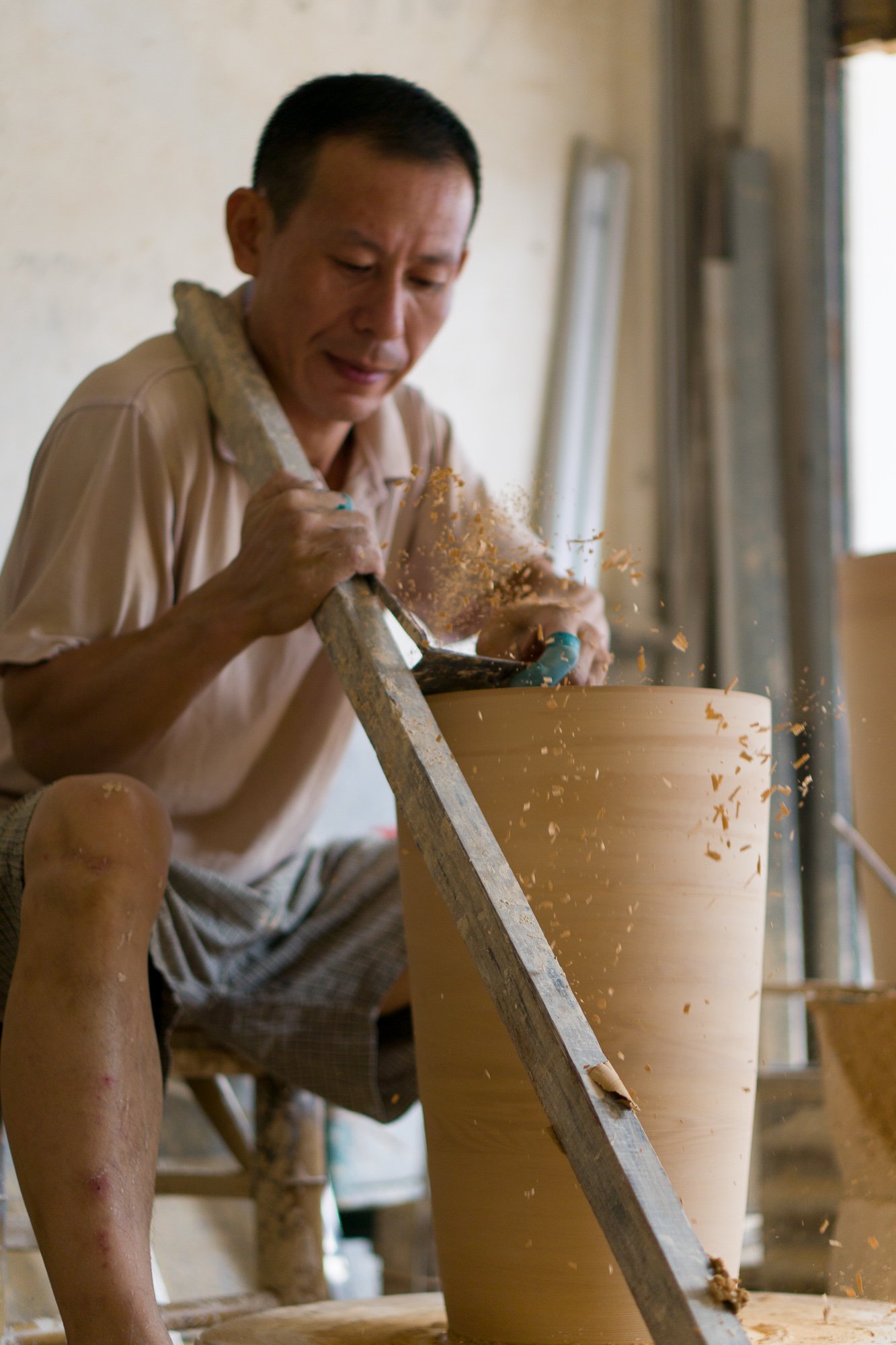

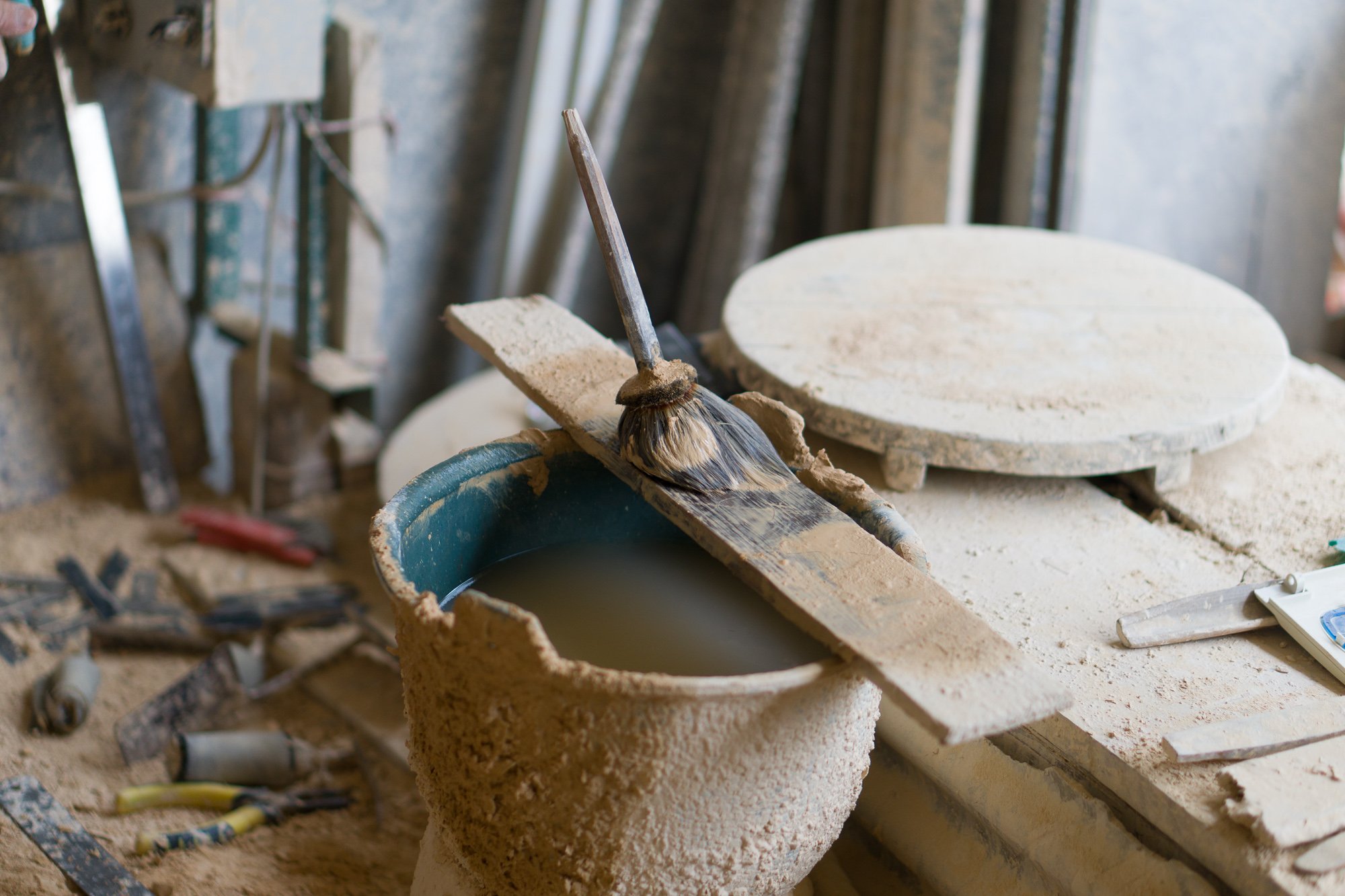


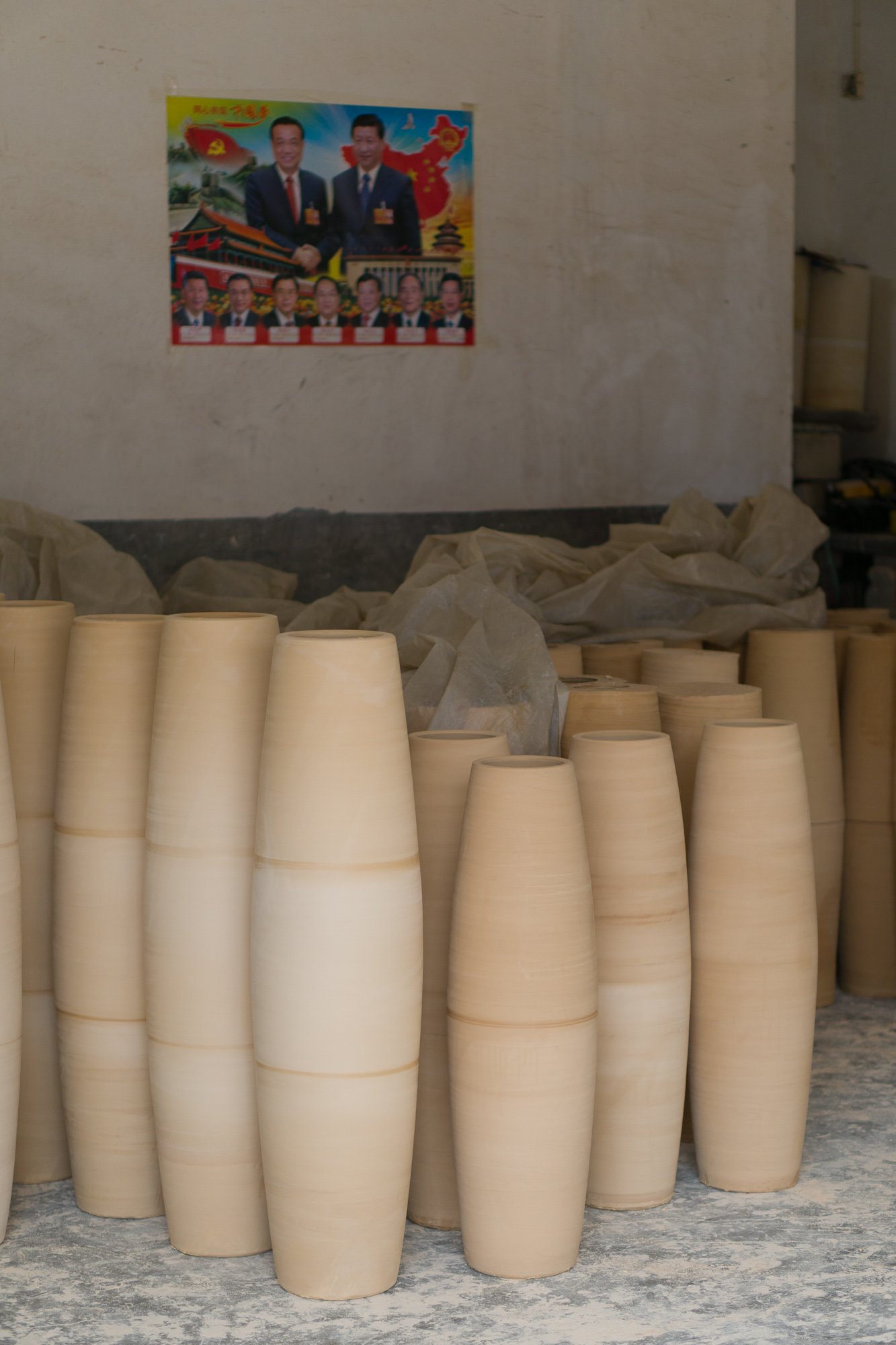
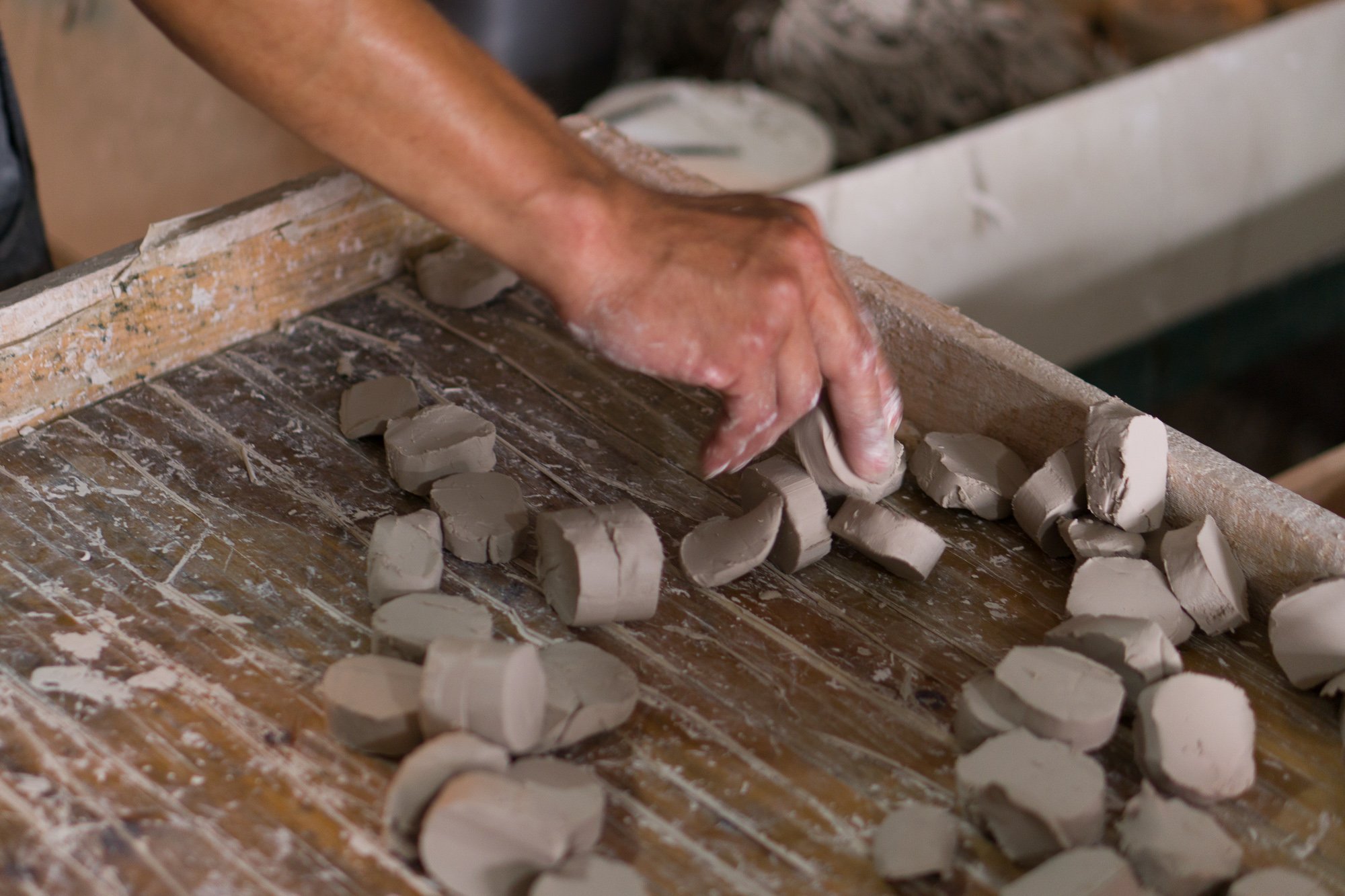
Jiggered Teacups, Chen Shan Zhen 陈善镇
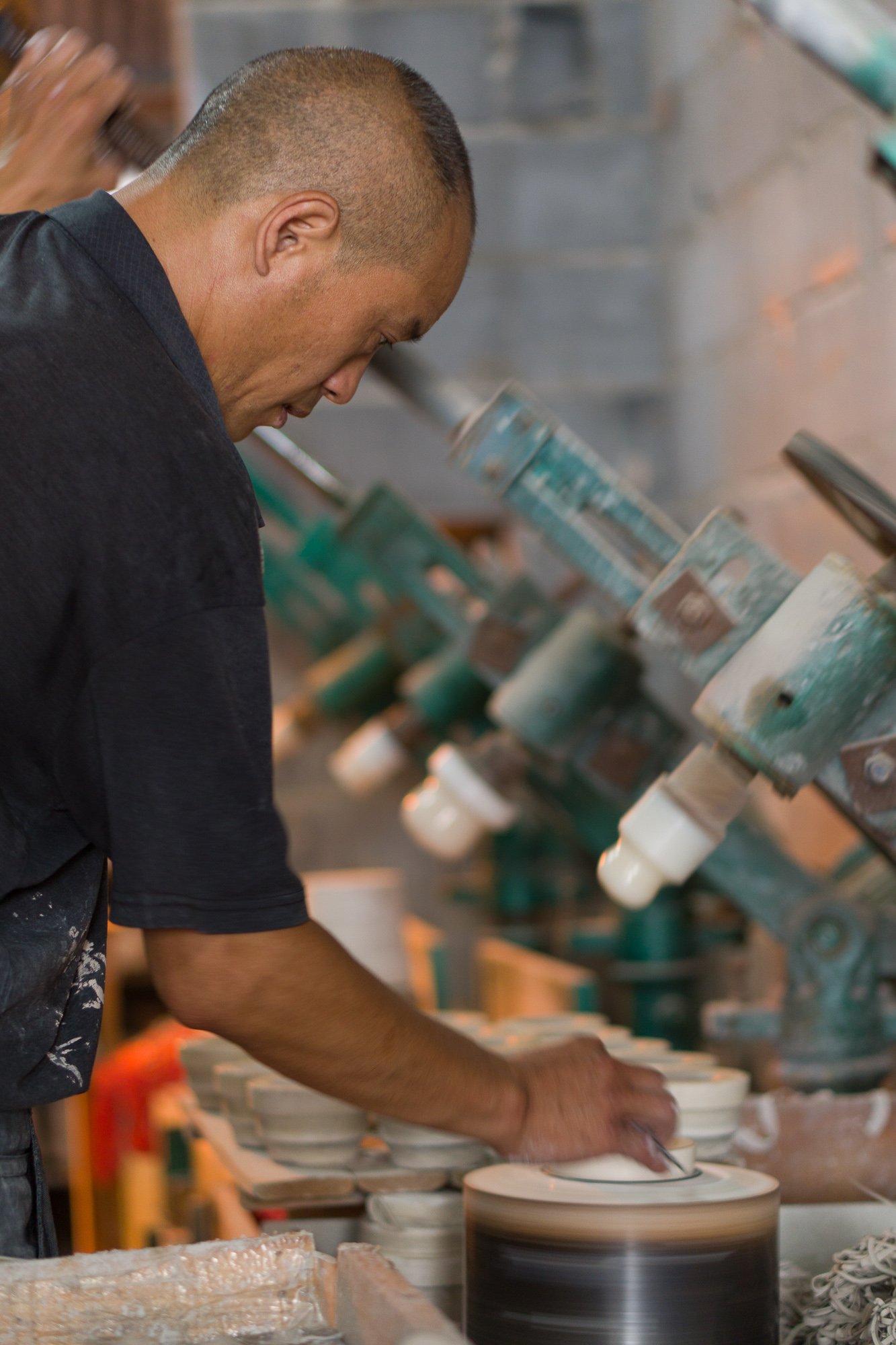

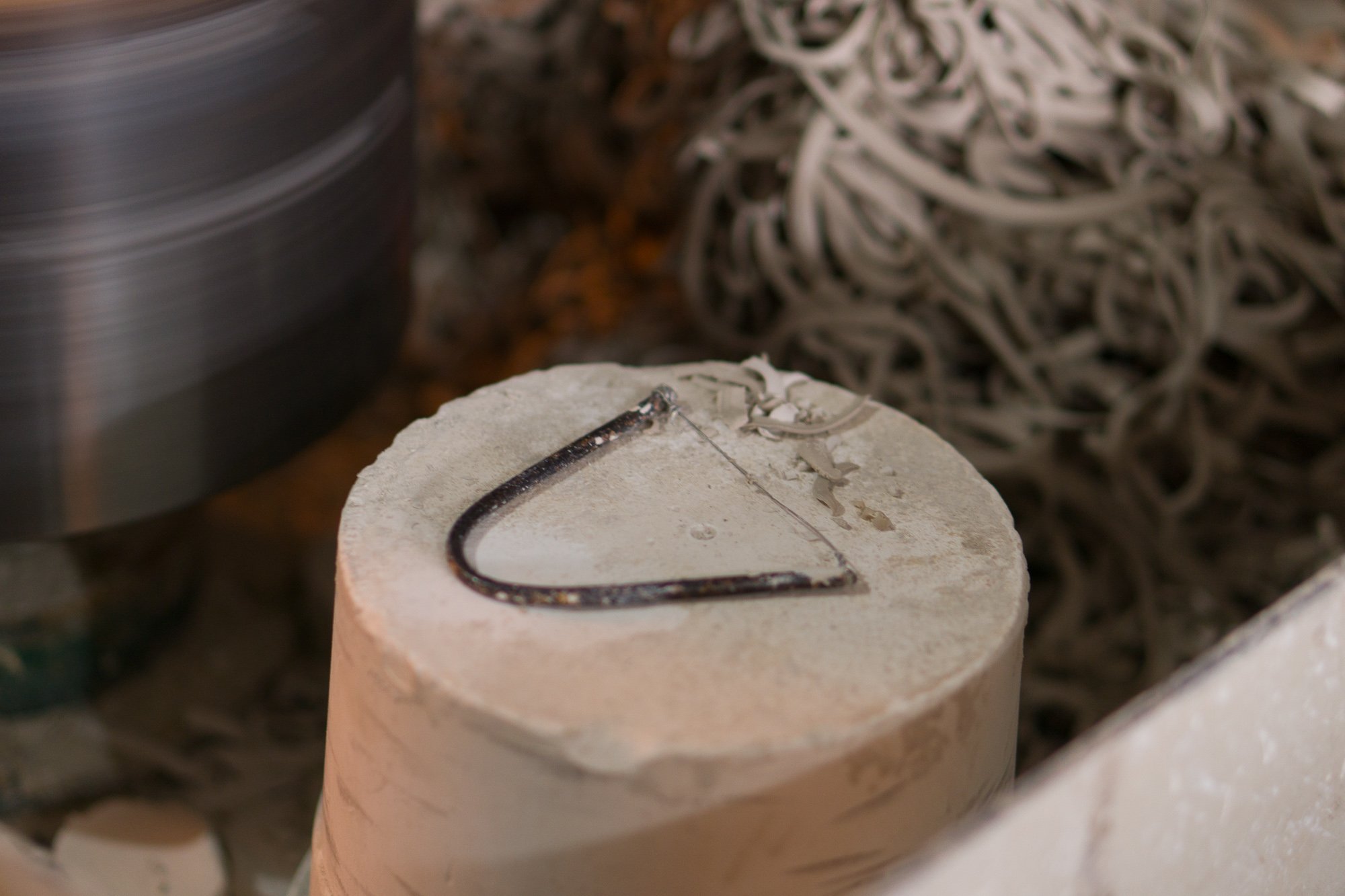

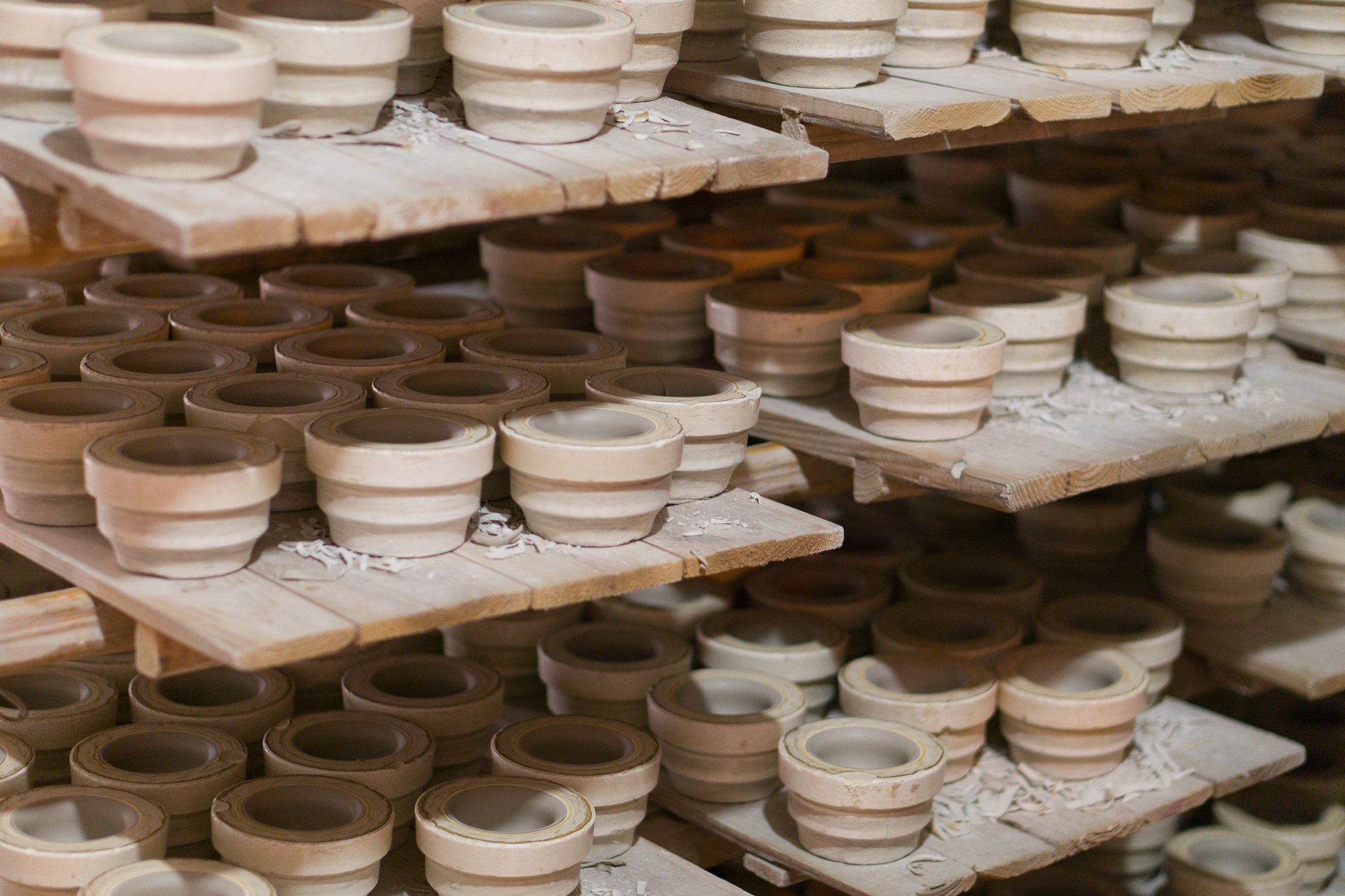

Unfinished Sections
Painting Blue & White
Mr. Li specializes in images of ancient ceramics painted on porcelain tiles. Here he shows his blue & white painting technique.
Sharpening Trimming Tools
Sharpening trimming tools is a craft of its own with many different techniques. Here we see a basic sharpening procedure for trimming tools.
















